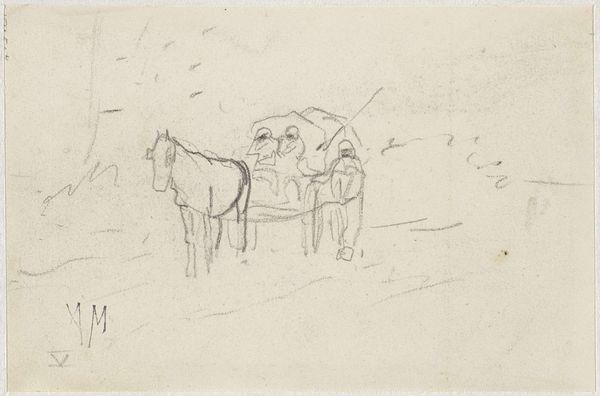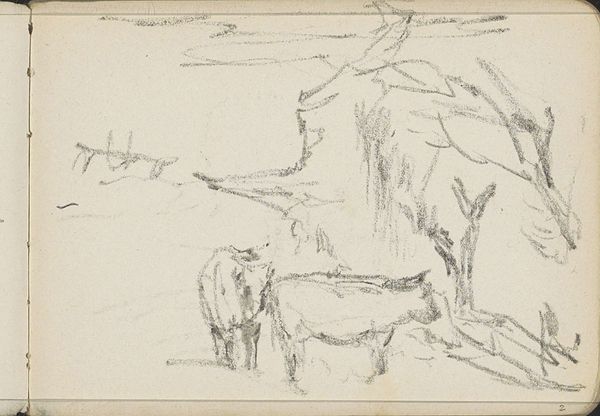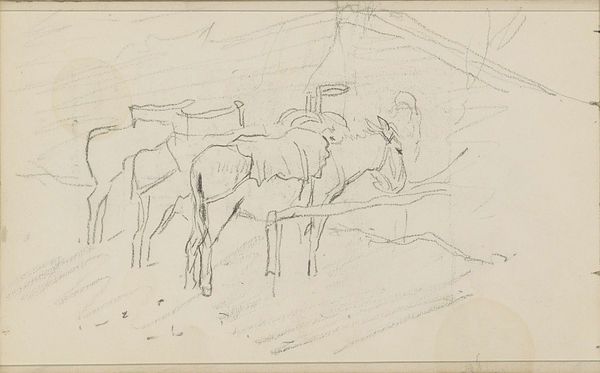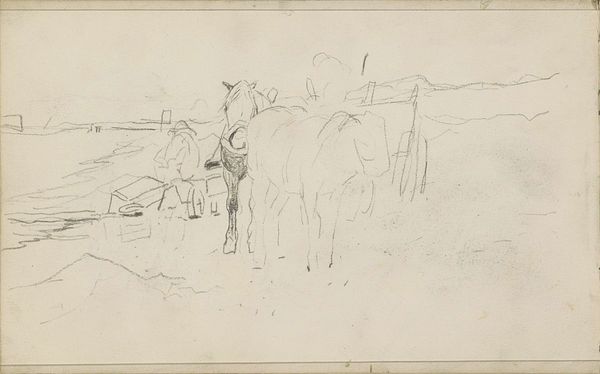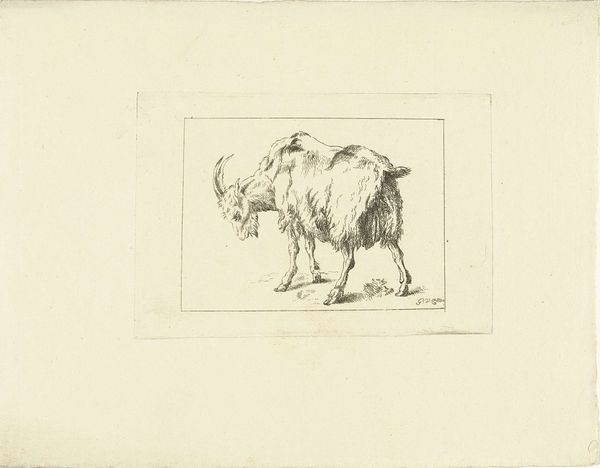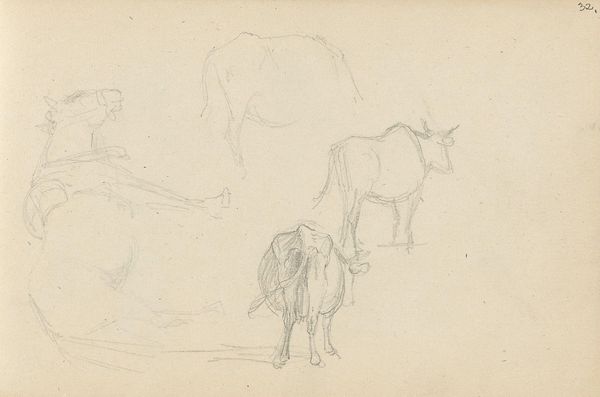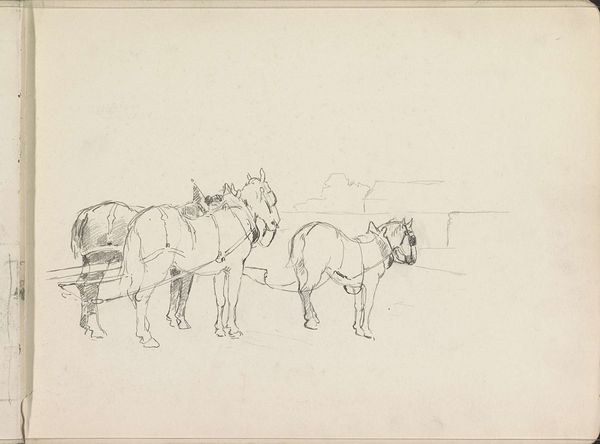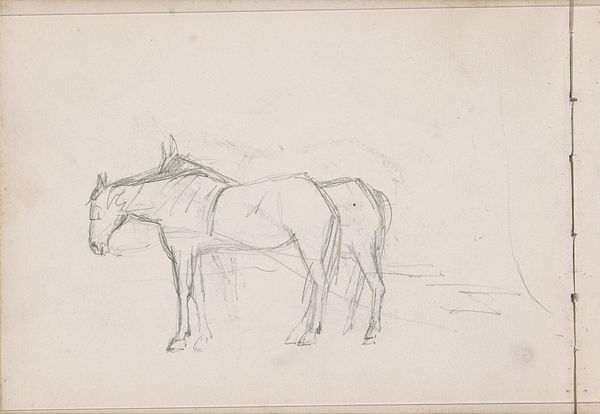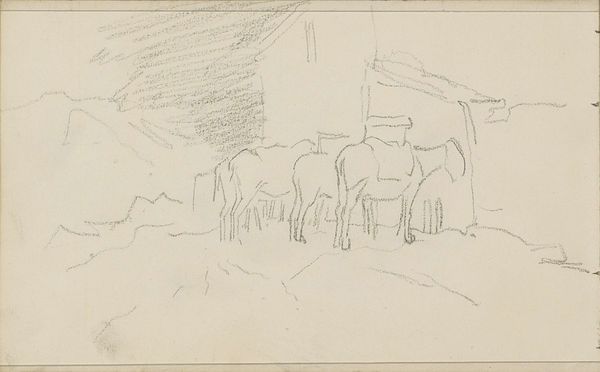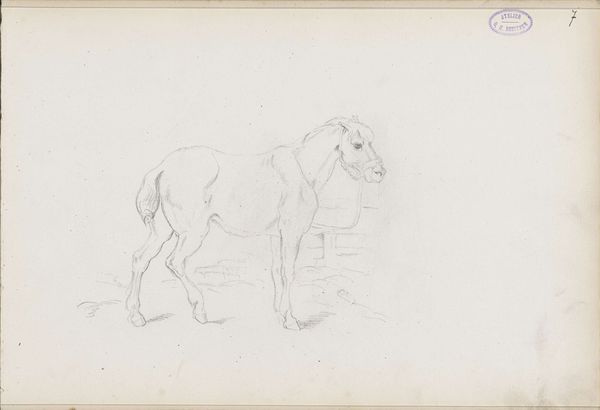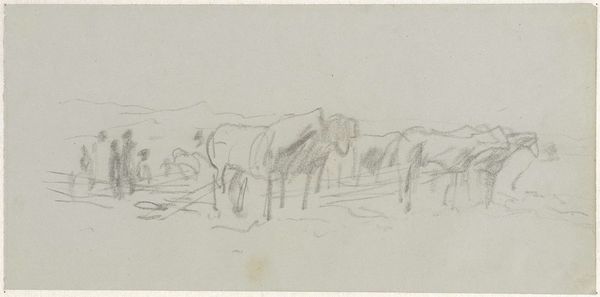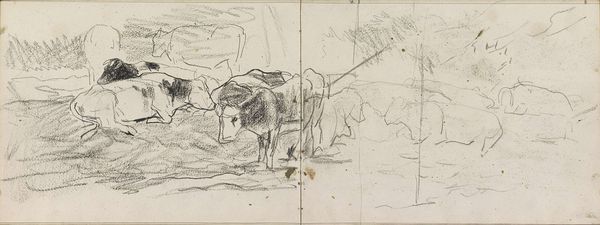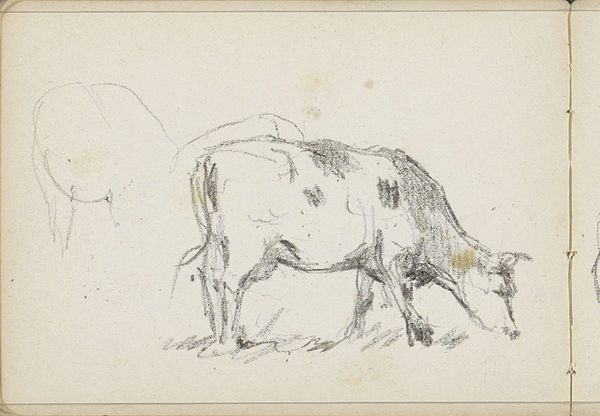
drawing, pencil
#
drawing
#
animal
#
pencil sketch
#
landscape
#
pencil
#
horse
#
realism
Copyright: Rijks Museum: Open Domain
Curator: Welcome. We are standing before "Ploegend paard" by Anton Mauve. It’s a pencil drawing that resides here at the Rijksmuseum. Editor: It looks more like a preliminary sketch, really. It's intriguing; the pencil lines are so delicate, but they evoke a sense of weight, the sheer labor implied is impressive, you can almost feel the strain of the harness on the animal's back. Curator: Mauve had a significant influence on Van Gogh, who saw him as an established, successful artist. These images of rural labor speak to a growing interest in the social realities facing workers at the time. This drawing is more than just a study; it reflects changing societal values. Editor: Absolutely, and look at the paper itself—its texture, its imperfections. These material details show it as something worked on and valuable. The way Mauve uses light and shadow, despite the simplicity of the medium, conveys the backbreaking work. It speaks of a directness, a commitment to realism achieved by highlighting the marks left on the page. Curator: It's tempting to consider this in the broader context of art institutions. Mauve’s works were commercially successful in his lifetime; appreciated by a burgeoning middle class in The Hague seeking realistic depictions of Dutch life, he represented a figure approved by and circulating in institutional spaces. Editor: Precisely! It serves to ground it, gives it history. Even the apparent 'roughness' can be viewed as a choice, reflecting an authenticity sought in depicting rural labor, where the means of production becomes part of the artistic statement. The choice to draw, and how those pencil marks sit on this piece of paper matters. Curator: He managed to capture both the beauty and the hardship. His association with The Hague School played a part in popularizing realist landscape painting in the Netherlands, fostering new trends in both its patronage and visibility. Editor: This little sketch, humble as its materials might seem, tells quite a powerful story about the convergence of labor, art, and societal perspectives of the era. Curator: It really offers much food for thought about the public life of art in that moment. Editor: Indeed, a subtle reminder of art's ties to everyday experience and the world of physical labor.
Comments
No comments
Be the first to comment and join the conversation on the ultimate creative platform.
